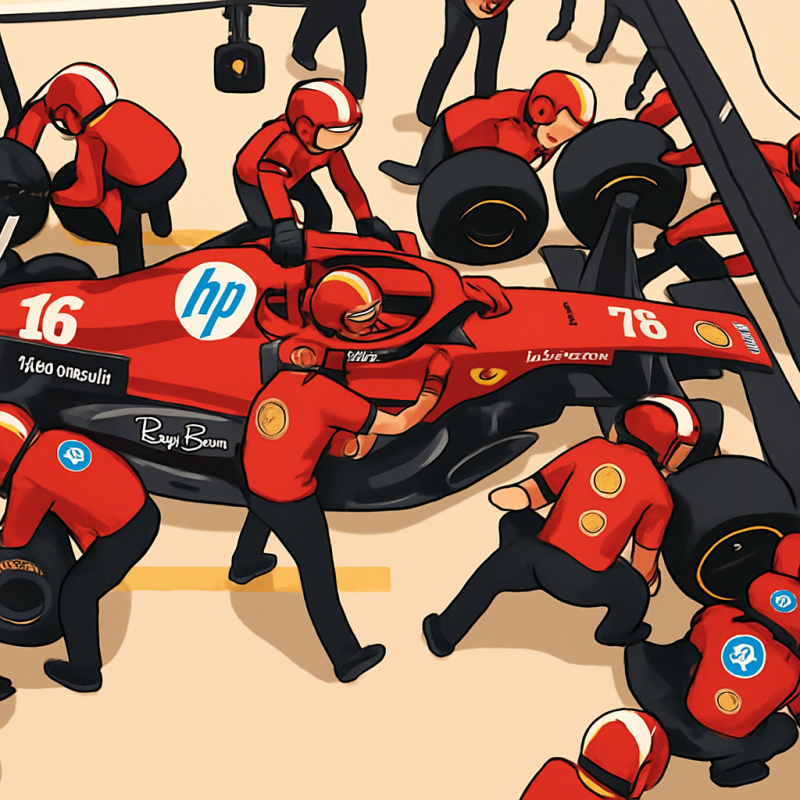Dutch GP strategy blown wide open as pit-lane speed hike cuts pit loss
Zandvoort’s always been about nerve and track position. This weekend, you can add a faster pit lane to the equation — and suddenly, those tidy one-stoppers don’t look nearly as safe.
The FIA has raised the pit-lane speed limit from 60 km/h to 80 km/h for the Dutch Grand Prix, bringing it into line with most of the calendar and slicing roughly three seconds off the pit-loss. That alone won’t turn Zandvoort into Monza, but it shifts the strategic math enough to tempt teams into riskier calls.
Pirelli’s Mario Isola put it plainly: what used to be a straightforward one-stop forecast is now a lot murkier. The move from about 22 seconds to roughly 19 seconds for a full pit transit nudges the field toward two stops, but the real swing factor is still tyre degradation — and how confident teams feel about managing it over long stints on a tight, sinuous circuit where passing is never easy.
Overtaking remains the pinch point. Teams account for that in their simulations with overtaking “coefficients,” essentially modelling how hard it is to complete a move and how much tyre delta is needed to make one stick. Pirelli doesn’t build that into its generic strategy guidance, because it produces a baseline for everyone. The teams, as ever, will tailor everything to grid slots and track position.
Pirelli has brought the C2 (hard), C3 (medium) and C4 (soft) to Zandvoort — the familiar middle range that gives options without getting too adventurous. Interestingly, FP3 mileage skewed high on tyres as crews stress-tested stint lengths and warm-up windows. The takeaway from Friday was that a one-stop can be made to work if you prioritise position and patience. On pure numbers, though, a two-stop remains theoretically quicker.
On paper, the fastest route looks like a medium–hard–hard sequence. That lets drivers push a touch more within each stint without gambling the race on a single long phase of tyre nursing. And if a team commits to two stops from the outset? Starting on the soft can make sense: grab the launch grip, bank track position off the line, then carry the day with the hard and the medium.
The soft isn’t just a qualifying toy here, either. With tyre life not expected to be marginal, there’s a window to deploy the C4 in the race — particularly late on if an extra stop is needed or a Safety Car tilts the risk-reward. That said, nobody’s pretending Zandvoort has suddenly become an overtaking paradise. Any plan that involves catching and clearing cars needs a meaningful pace offset, and that’s where a second stop can either be inspired… or leave you staring at a rear wing for 20 laps.
There’s weather in the mix, too. Forecasts pointed to a higher chance of rain around race time and cooler conditions than last year, which should ease rear-tyre thermal degradation — the main headache at this circuit. If the rears run cooler, stints can stretch, which naturally nudges strategy back toward fewer stops. If the track stays green or the breeze drops and temps nudge up, the calculus flips again.
So the strategic picture looks like this:
– One-stop: manageable if you’re protecting track position and happy to pace yourself, especially with cooler temps helping the rears.
– Two-stop: faster on paper thanks to the reduced pit-loss and better tyre performance windows, but only if you can overtake or undercut effectively.
That’s why the speed-limit tweak matters more here than at most tracks. Three seconds off the pit penalty doesn’t sound like a lot in isolation; at Zandvoort, with narrow lines and few clean passes, it can be the difference between committing to an undercut or sitting tight behind a slower car. Teams now have just enough incentive to roll the dice.
The only certainty? Strategy boxes will be busy. Expect engineers to keep both paths live well into the first stint, watching for undercut cues, tyre drop-off and cloud cover. If we get a late Safety Car, that dormant set of softs might suddenly become the star of the show. If not, it’s a race of discipline — and whoever reads the new pit-loss landscape best may not need to pass many cars to win it.




